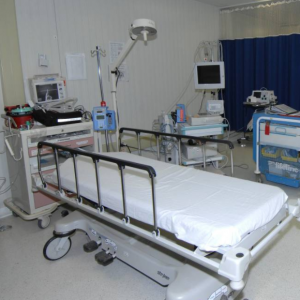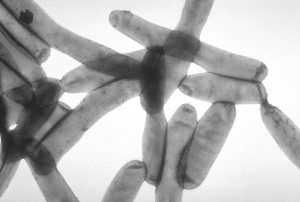Invasive fungal infections acquired in the hospital have progressively emerged as an important cause of life-threatening infection. In particular, airborne fungi in hospitals are considered critical pathogens of hospital-associated infections. Just a quick post – this may be of interest. Source: High diversity of airborne fungi in the hospital environment as revealed by meta-sequencing-based microbiome …
Just a quick post here. Studies of the microbiology of built environments that house animals (e.g., aquaria, farms, animal shelters, zoos, etc) are of growing interest for multiple reasons. In that regard this paper might be of interest to some – because it covers some topics that are sometimes neglected in this general area – viral diversity …
Vague rules give healthcare providers leeway in deciding when, or even whether, to report clusters of infections. And when they do, the public rarely knows. This is a really really big deal. We desperately need to be more open about antibiotic resistant bugs and any outbreaks of them. Kudos to Reuters and Deborah J. Nelson, David Rohde, …
Quick post here (h/t to Paula Olsiewski for the link) about a cool-sounding new device for the rapid detection of Legionella. I can’t say that I’m on board with the fanciful claims made in the press release (e.g. “The risk of catching fatal Legionnaires’ disease from air conditioning units has been dramatically reduced“) but the …
We’re recruiting a student/postdoc for this project! If it sounds interesting, please contact the Huttenhower Lab! We were happy to hear that we’ve been funded by the Sloan Foundation to continue our study of microbes on the Boston subway. Our original study involved 1) identifying which microbes were resident in this built environment, 2) understanding …
Waste released from pharmaceutical plants in India and China is contributing to the spread of antibiotic-resistant superbugs. So this is certainly interesting. There is an opinion piece in STAT by Henry Waxman and Bill Corr from Waxman Strategies: Waste from pharmaceutical plants promotes antibiotic-resistant superbugs. It is of interest both because we are almost certainly in …
Collecting together here some reports from the Lake Arrowhead Microbial Genomes Meeting David Coil’s summaries Lake Arrowhead Microbial Genomics #LAMG16: Day 4 and Random Thoughts Lake Arrowhead Microbial Genomes #LAMG16: Day 3 Lake Arrowhead Microbial Genomics #LAMG16 Report: Day 2 Lake Arrowhead Microbial Genomics #LAMG16 Report: Day From me microbiology of the Built Environment session …
So I feel like this shouldn’t need to be said… but clearly it does. Don’t kiss chickens or bring them into your bedroom. Should my opinion not carry enough weight, simply check out this new report from the CDC “Outbreaks of Human Salmonella Infections Associated with Live Poultry, United States, 1990—2014”. Abstract below. Major highlights …
Windows, desks and employees are being wired up in a quest to create healthy, evidence-based environments. Interesting article by Emily Anthes in Nature: The office experiment: Can science build the perfect workspace? : Nature News & Comment It focuses on a collaboration between the Mayo Clinic and a design firm – Delos to create something called the …
Jumping on the blame train, my colleagues and I have found yet another reason to avoid antibacterial products. Our study, which identified a correlation between certain antibiotic resistance genes and the much maligned triclosan in indoor dust, was published in Environmental Science & Technology last week. As of today, the full text version is freely …







